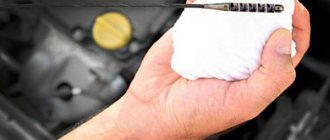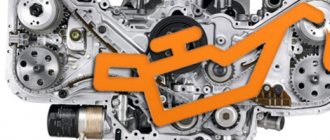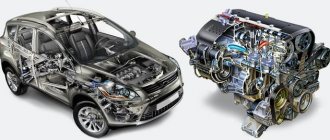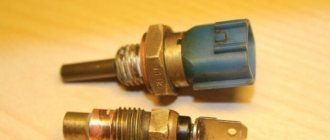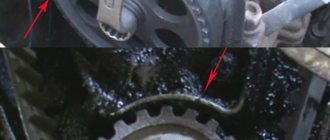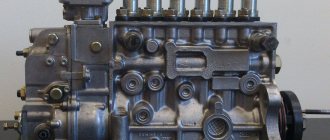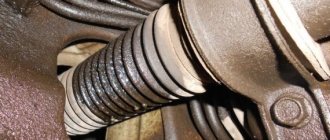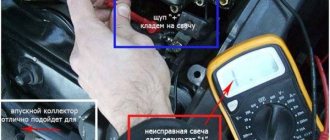Stable operation of the engine is facilitated by a properly functioning cooling system that maintains the engine temperature within the operating range. Any malfunction of the cooling system parts can cause the car engine to overheat, adversely affecting its performance and even causing it to fail - in especially severe cases.
The reasons for engine overheating can be very different. Some of them are quite trivial, others are much more serious. The problem of increased drive unit temperatures cannot be underestimated. The cause of the engine overheating must be found as soon as possible, and then everything must be done to restore it to normal.
In cases of overheating, there are two possible outcomes: the engine must be restored, or due to misalignment of the head and cylinder block, the engine assembly will have to be replaced.
Possible causes of engine overheating
When designing the engine structure, engineers take into account the fact that the unit will operate for a long time in a strictly defined temperature range. In simple words, it takes into account the fact that after starting the engine gains temperature to the operating zone, after which this range is maintained throughout the entire operation of the engine.
As a rule, in modern power units the temperature range that is considered operating varies from 85 to 110 degrees. This means that the task of the cooling system is to prevent the temperature from exceeding a given threshold.
The importance of maintaining operating temperature is explained by the fact that this contributes to a favorable engine operating mode, the ratio of operating gaps between parts, maintaining the required viscosity of the engine oil and preserving its properties.
Fuel consumption also depends on the engine temperature, since in injection engines the coolant temperature sensor is involved in mixture formation.
Typical malfunctions of the engine temperature sensor
The most common malfunction of engine temperature sensors, which use a thermistor as a sensitive element, is the discrepancy between its electrical resistance and the temperature of its body. Most often, such a malfunction manifests itself as a sharp increase in the electrical resistance of the sensor in a very narrow temperature range of the sensor body (or in several temperature ranges); less often, a break in the sensor’s sensitive element occurs. At the moment when the temperature of the sensor body falls into this range, the resistance of the sensor increases sharply, as a result of which the voltage on the sensor also increases. As a result, the temperature value calculated by the control unit based on the increased voltage on the sensor turns out to be less than the actual one. If the engine coolant temperature calculated by the engine control unit turns out to be less than the actual temperature by a significant amount, the control unit may increase the amount of fuel supplied so much that the engine stalls due to an over-rich air-fuel mixture. In this case, starting the engine becomes impossible. In some cases, spark plugs may need to be replaced. A malfunction of the engine temperature sensor at the time of its occurrence can be detected using an ohmmeter by comparing the measured resistance of the engine temperature sensor with the table value for a given temperature.
Coolant leak
If topping up the missing coolant does not solve the problem and the engine continues to overheat, this may indicate a leak.
An antifreeze leak leads to instant overheating, and the cooling system is filled with air, forming a plug. There are many reasons for a coolant leak:
- damage to the rubber pipe,
- radiator destruction,
- faulty water pump seal,
- breakdown of the cylinder head gasket,
- heat exchanger malfunction.
The situation is corrected by replacing faulty parts with new ones, and if it is impossible to replace the damaged part in time, you can use a sealant for the cooling system.
Car engine overheating due to radiator malfunctions
A defective radiator is most often responsible for loss of coolant. It should be remembered that this element of the car is located in such a way that it is constantly exposed to harmful external factors.
The most dangerous are water and salt, which can cause the radiator to leak, which usually occurs in the lower part. Fortunately, checking this fact does not require visiting a specialized center.
All you have to do is start the engine and make sure there are no stains under the front of the car. If there are any, this will indicate a hole in the radiator, which usually causes it to be replaced. If there is no stain, you need to check other components of the cooling system.
Radiator hose defects
The source of the leak can also be clearly visible radiator hoses. If they are cracked, the driver will have to replace them with new ones. It is necessary to check their condition, as well as the assembly on the connectors on which they may have been applied too loosely.
Cable clamps
The cables on the connectors are mounted using clamps. Over time, corrosion can occur so they don't hold the radiator hoses with enough strength. This may also lead to leakage.
Head connector
The plastic tip can also cause a coolant leak. Over-tightening will cause crack damage, which may lead to leakage. The damaged part should be replaced with a new one.
The engine overheats due to insufficient circulation
Often the culprit of poor circulation is contamination of the cooling jacket and radiator. This happens due to the use of low-quality fluid, which leaves sulfate deposits that block the path for coolant.
The source of the problem with increased engine temperature can also be a damaged coolant pump, which is responsible for circulating fluid in the cooling system. Pumps equipped with a plastic impeller are most susceptible to this problem.
If the water pump fails, the efficiency of the system is reduced: it may leak fluid, the pulley may jam due to the bearing, or rotate with play.
When purchasing a new non-original pump, you may notice that the impeller of the cheaper pump has a different shape, which means it will not provide working pressure to the system.
Cooling system components that can cause engine overheating
The cooling system of an internal combustion engine consists of several important components and elements, which you can see in the figures above and below. The correct operation of the power unit depends on their coordinated work. Malfunctions of some parts of the cooling system lead to overheating of the engine.
- Coolant. Modern cars are equipped with a closed-type liquid cooling system. Antifreeze or antifreeze is used as a coolant, which should remove heat from the engine and release it to the environment.
- Cooling jacket. The most “hot spots” in the engine are the combustion chambers, where the fuel ignites. Therefore, to remove heat, cavities are made in the cylinder block and cylinder head through which the coolant passes, taking with it excess heat.
- Radiator. This part of the car carries out heat exchange of antifreeze. Hot coolant passes through the radiator tubes, and an air flow blows from the outside, cooling the liquid in the radiator.
- Pump or water pump. It is designed to ensure that coolant constantly circulates in the system. The pump forces antifreeze to move from the engine to the radiator and back.
- Fan. When a car moves slowly in a city traffic jam or even stops, there is not enough air flow to cool the engine. In this case, the fan turns on, which increases airflow to the radiator and thereby reduces the temperature of the antifreeze, preventing the engine from overheating.
- Thermostat. In the cold season, the engine warms up longer than in summer. The thermostat is designed to speed up the engine warming up to operating temperature. It is a valve that opens or closes at a certain coolant temperature. A faulty thermostat is the most common reason why an engine overheats.
- Steam valve. A steam valve is mounted in the radiator cap or expansion tank. It regulates the pressure in the cooling system, triggering when the permissible limit is exceeded.
As soon as the car is started, continuous circulation of fluid begins in the cooling system. The operating principle of this system is clearly visible in the figure below.
- Hot antifreeze from the cooling jacket passes through metal and rubber pipes, reaching the thermostat.
- Until the liquid temperature reaches the required level, antifreeze is sent from the thermostat to the engine again, circulating in a small circle.
- As soon as the liquid temperature reaches 80-90 °C, the radiator starts working.
- If the antifreeze continues to heat up, reaching 95-98 ° C, then the fan turns on.
- Thanks to the valve on the expansion tank or radiator, the liquid level increases when heated, and when cooled it returns to its original point.
Thus, if the cooling system is functioning properly, the engine does not overheat and operates at normal operating temperatures.
Other problems that cause the engine to overheat
An antifreeze leak is the most common, but only one cause of engine overheating. Other items may be responsible, including the fan, thermostat, temperature sensor, coolant pump, or head gasket.
temperature sensor
Increased engine temperature may be indicated by a faulty temperature sensor, which should be checked by connecting the car to a computer or replacing it with a new part. It is worth emphasizing that the problem can be not only the sensor itself, but also the power cable.
Thermostat
The thermostat is the element responsible for maintaining the correct engine temperature. When it overheats, it's worth taking a closer look. It is not difficult. You just need to put your hand on the hose leading to the radiator.
If it is warm and stiff, then the thermostat is working properly. If the thermostat fails, you can expect two scenarios: long warm-up and overheating.
A cold pipe is a sign of jamming in the closed position, when the coolant works in a small circuit, bypassing the radiator, and accordingly, overheating is inevitable.
In this situation, the driver can only replace the thermostat and then ventilate the entire system.
Fan
It is also worth focusing on ventilation if the engine overheats during slow city driving. Most likely, the culprit is the belt that could have fallen off it. Additionally, the power cord may also be unplugged.
Cylinder head gasket
A damaged head gasket can also cause the engine to overheat. Then increased engine temperature is just one of the signs of such a failure. Other symptoms that indicate a gasket problem include white exhaust fumes and bubbles appearing in the expansion tank.
Consequences of mild, moderate and severe overheating
The consequences and cost of repairs depend on the degree of overheating of the internal combustion engine. Timely maintenance of the car, monitoring the coolant level and temperature conditions when driving reduces the occurrence of overheating significantly.
Slight overheating of the internal combustion engine occurs when the engine operates at a temperature exceeding the temperature for 4-12 minutes. This mainly occurs when the thermostat or fan malfunctions, and the driver detects this in a timely manner and takes action.
In many cases, such a situation, if it occurs once, does not affect the condition of the engine, especially if it has a short mileage. The pistons often melt slightly; when the temperature rises significantly, even for a short time, dark-colored smoke appears from the muffler, and there is a feeling that the engine is constantly running under load.
Even after a single short-term overheating of the engine, it will subsequently begin to heat up more often due to changes in the pistons and the remaining melted metal in the cylinders.
The average degree of overheating of the internal combustion engine appears when the engine is running at extreme temperatures for at least 20 minutes. There are many reasons for this situation and they have all been described earlier.
The consequences of such overheating are already more tragic. In addition to the consequences characteristic of mild overheating, which manifest themselves to a greater extent, there are added skew of the cylinder head or the appearance of cracks in it, burnout of cylinder head gaskets, ejection of the valve seat, severe deformation of the pistons, destruction of the inter-ring partitions of the pistons, oil leakage from under all kinds of gaskets and seals .
Severe overheating of the internal combustion engine causes all sorts of very serious consequences. In this case, individual working units may survive or the engine can be thrown out.
The main consequences of excessive engine overheating:
- The main consequences of such overheating will begin in the combustion chambers, in which the pistons will begin to melt and burn out, until holes appear in them and complete destruction. Melted piston residue will stick to the cylinder walls, further complicating the movement of the pistons. Notches also appear on the cylinder walls. At this stage the engine may stop.
- When the pistons are destroyed and the combustion chamber is damaged, the oil begins to overheat, completely losing its lubricating characteristics, causing increased friction between parts. As friction increases, the connecting rod and main bearings begin to melt, sticking to the crankshaft. Also, the liners can rotate both in the block and on the connecting rods, which can also cause the engine to stop.
- Under the influence of temperatures critical for the internal combustion engine, the cylinder head begins to deform, both the intake and exhaust valves burn out, one or more valve seats fly out of their places, and a loud ringing sound at the top of the engine becomes noticeable. The engine may stop.
- The piston has withstood such loads, in which case the crankshaft breaks due to a previously formed crack on one of the journals in place of the rotated liner. Even in this case, the internal combustion engine sometimes continues to work.
- One (or several pistons) cannot withstand significant overloads and it becomes jammed in the cylinder, which leads to its breaking in half. The lower part ends up in the pan, the upper part in the cylinder. The lightweight connecting rod and piston pin begin to dangle freely in the block and make a hole in one of the walls. This situation is popularly called the fist of friendship. When it does, the engine always stops running.
What to do if the engine overheats
If the engine temperature indicator is approaching or is already in the red field, you must stop the vehicle in a safe place and turn off the engine. Then check the cooling system. It may turn out that overheating of the car engine is caused by a lack of refrigerant, which in this case needs to be replenished as soon as possible.
Do not forget that it is forbidden to top up when the engine is hot - you need to wait until the temperature of the internal combustion engine and the coolant itself drops. Otherwise, the driver will be subject to severe burns when opening the expansion tank.
You should also remember that you cannot add cold antifreeze to hot antifreeze - this may adversely affect its properties.
Main reasons
It is impossible to say exactly what kind of problem occurred in a particular case. Here you should start from the specific symptoms and behavior of the car.
At the same time, a list of potential and most common causes is highlighted. It consists of:
see also
Wheel balancing: to do or not to do?
- faulty thermostat;
- cooling fluid leaks;
- coolant deficiency;
- faulty fan;
- water pump breakdown;
- radiator clogging;
- air filter contamination;
- malfunction of the radiator valve cover;
- damage to the cylinder head gasket;
- problems with the electronic control system, etc.
Each cause has its own symptoms and solutions. To better understand this issue, it is necessary to talk about the key factors separately.
This will give you some insight into possible situations, and will also allow you to understand how to act and what to do first.
Radiator problems
When it's hot outside, it's especially important to keep the engine in optimal condition and not let it overheat. After all, in winter the cold can partially compensate for overheating. In summer the situation only gets worse.
Overheating often occurs because a clogged radiator does not allow coolant to pass through, or does so very poorly. External blockages, which consist of dust, dirt, fluff, etc., are also dangerous. If contamination gets on the surface of the radiator, it can quickly dry out and block the honeycombs, preventing air from passing through them. Add here small stones and gravel that can damage the honeycombs, thereby reducing the cooling efficiency several times. The consequences are not difficult to guess.
When the radiator is clogged and the car is stuck in a traffic jam and is not cooled by oncoming air, overheating is inevitable. Timely checking and washing will help here. And inside and outside.
Thermostat
If we talk about which part most often causes such problems, it will probably be the thermostat. Up to a certain temperature, antifreeze moves along a small circuit of the cooling system, from the engine to the pump and back.
see also
How to sell a car profitably: good advice from a reseller
When the thermostat response temperature is reached, a special valve on the part is activated. This allows the liquid involved in the cooling process to move in a large circle, also passing through the radiator. It is quite easy to check a part for malfunction. When the engine is warm, touch the lower radiator hose or the element itself. If you don't feel warm, then the thermostat is stuck or is faulty. Provided that the engine is hot and the radiator is cold, the valve does not open, and the coolant does not circulate in a large circle.
Also, to avoid touching anything, turn on the stove when warming up. If it blows cold, the cause is probably the thermostat.
Fan
They will not talk about airing, since we have already discussed the issue of removing the air plug in a separate article. In addition to airing, low coolant levels and poor fluid quality cannot be ruled out.
As for the fan, if the internal combustion engine is overheating, you should listen or go to the engine compartment to check whether it is working or not. It must turn on when the temperature reaches about 95-105 degrees Celsius. The fan is also activated automatically if you turn on the air conditioning in the car. This diagnostic method is also worth checking. It is simple, but quite accurate. But you shouldn’t blame only the fan itself.
Its work is related to sensors, relays and fuses. Perhaps the problem is somewhere in the control system. Start simple. Namely, check the fuse. If everything is fine with it, or you changed the fuse, but there is no result, check the temperature sensor. Don't rush to change. First, disconnect the wires from the controller and short them together. Turn on the ignition. If the fan spins, there is a problem with the sensor.
When the sensor and fuse are in order, the relay option remains.
When nothing helps
The engine cannot overheat without problems. Apparently you just haven't found the source of the problems yet. You can look for it in the water pump, sensors, cooling fluid, burnt engine gasket, oil in the cooling system, etc.
Some problems can be solved completely or temporarily, provided that overheating overtook you in the middle of the road. But there are also cases when you have to call a tow truck or be towed.
If the problem strikes you by surprise, try lowering the temperature by turning on the stove. Also, as you move, turn off the engine and coast.

